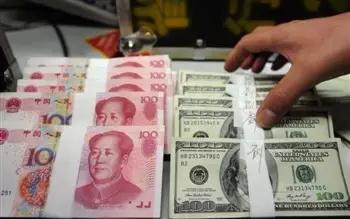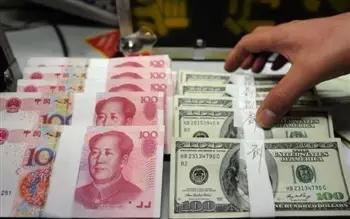By Zhong Sheng from People’s Daily

Starting from October 1, the Chinese yuan will be included in the Special Drawing Rights (SDR) basket of the International Monetary Fund (IMF) along with the US dollar, the Euro, the Japanese yen and the British pound.
This will be the first time for a currency of a developing country to be included in the basket. The representativeness and appeal of the SDR basket will be increased as a result and the international financial market will be further stabilized as well.
IMF Managing Director Christine Lagarde hailed the inclusion of the yuan into the SDR basket previously, saying that it is “an important milestone for the reform of the international monetary system.”
Charles Collyns, chief economist of the Institute of International Finance, also praised the increasingly heavier influence carried by the Chinese yuan in the international landscape.
With growing attention to the effect brought by the inclusion of the Chinese yuan to the international financial system, the world now expects China to play a bigger role in global rule-making, the economist added.
As a supplementary international reserve asset and a unit of account, SDR was first created to increase liquidity of the global market and reform the international monetary system. But its effect wasn’t satisfactory in the last fifty years.
In order to better reform the current global monetary system and the world financial architecture given such a background, it is important to turn SDR into a strong stabilizer in the international monetary system.
As an effort to build a more stable and resilient global financial architecture, China, as the rotating presidency of the G20 this year, restored the International Financial Architecture Working Group.
One of the group’s work priorities is to seek a broader use of SDR through listing SDR as reporting currency, issuing SDR-denominated bonds and other approaches.
Many such plans and initiatives contributed by China have been agreed upon by G20 leaders in their Hangzhou communiqué. For instance, they, in the communiqué, not only welcomed the inclusion of Chinese yuan into the SDR basket, but also expressed their support toward the ongoing examination of the broader use of the SDR, as well as the detailed measures to this end.
By advocating the establishment of the Asian Infrastructure Investment Bank and the BRICS Development Bank, incorporating Chinese yuan into SDR currency basket, and making efforts to improve international financial architecture during the G20 summit, China has shown its strong sense of responsibility as a major country in global economic governance.
All of these efforts made by China aim to build a more rational, balanced and fair global governance system, improve the international monetary system, safeguard the stability of global financial markets and finally inject confidence into world economy.
This will be the first time for a currency of a developing country to be included in the basket. The representativeness and appeal of the SDR basket will be increased as a result and the international financial market will be further stabilized as well.
IMF Managing Director Christine Lagarde hailed the inclusion of the yuan into the SDR basket previously, saying that it is “an important milestone for the reform of the international monetary system.”
Charles Collyns, chief economist of the Institute of International Finance, also praised the increasingly heavier influence carried by the Chinese yuan in the international landscape.
With growing attention to the effect brought by the inclusion of the Chinese yuan to the international financial system, the world now expects China to play a bigger role in global rule-making, the economist added.
As a supplementary international reserve asset and a unit of account, SDR was first created to increase liquidity of the global market and reform the international monetary system. But its effect wasn’t satisfactory in the last fifty years.
In order to better reform the current global monetary system and the world financial architecture given such a background, it is important to turn SDR into a strong stabilizer in the international monetary system.
As an effort to build a more stable and resilient global financial architecture, China, as the rotating presidency of the G20 this year, restored the International Financial Architecture Working Group.
One of the group’s work priorities is to seek a broader use of SDR through listing SDR as reporting currency, issuing SDR-denominated bonds and other approaches.
Many such plans and initiatives contributed by China have been agreed upon by G20 leaders in their Hangzhou communiqué. For instance, they, in the communiqué, not only welcomed the inclusion of Chinese yuan into the SDR basket, but also expressed their support toward the ongoing examination of the broader use of the SDR, as well as the detailed measures to this end.
By advocating the establishment of the Asian Infrastructure Investment Bank and the BRICS Development Bank, incorporating Chinese yuan into SDR currency basket, and making efforts to improve international financial architecture during the G20 summit, China has shown its strong sense of responsibility as a major country in global economic governance.
All of these efforts made by China aim to build a more rational, balanced and fair global governance system, improve the international monetary system, safeguard the stability of global financial markets and finally inject confidence into world economy.
 Menu
Menu
 Op-ed: China shows reliability in global financial governance
Op-ed: China shows reliability in global financial governance
















